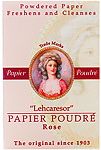Sticky Saxophone Pads – a Problem We All Face
One of the most common pads that keeps sticking is the G#. This is because of it’s location and the fact that it’s also in the natural closed position while not being playing. Some other common ones can be the lower keys that also are in the closed position. Also the high palm keys can get sticky as well. If you clean your saxophone regularly you probably won’t face this problem as much as I do.
How I Fix a Sticky Saxophone Pad
This is a common a recurring problem for me and I do have a couple different ways of fixing it. First you can use a small piece of ordinary paper. Sliding it through between the tone hole and the pad.
Press on the note key as you slide it through, not too hard and not too soft but for the paper to be able to pull the sticky gunk away from the pad and tone hole.
Use a Dollar Bill
Doing this same technique, but use a dollar bill instead. The material of paper money is rougher than plain paper and so will do a better job. Since my main problem key is usually G#, fitting a wide piece of paper or money is too difficult because of the ring that’s welded onto the sax near this G# location. Cutting or folding the paper is necessary to make it fit and slide through. You probably don’t want to cut your money but folding it may work ok.
 So the best way I’ve found to fix a sticky saxophone pad is to use Powdered Paper. A music store turned me on to this product many years ago and I have stuck to it ever since as it works better than anything else I’ve tried.
So the best way I’ve found to fix a sticky saxophone pad is to use Powdered Paper. A music store turned me on to this product many years ago and I have stuck to it ever since as it works better than anything else I’ve tried.
This type of thin paper is coated with a powder that’s normally used to wipe off make up but works for a sticky pad as well! The pad will leave a very light coating of powder which dries the tone hole and pad and so will get rid of any stickiness.
Once Your Sax is Playing Again Check Out Some Music and Play-along Backing Tracks
Using a backing track is my favorite way of learning and experimenting with songs. Check out the growing list of blues, rock and pop songs that I’ve arranged for saxophone.
Music charts include Bb and Eb and of course a downloadable MP3 audio backing track… so let the fun begin!



Fresh and clean huh? Too funny. Johnny: I have been using Pad Stick ever since you told me about it 2 years ago. No pad stick now! I also will use a piece of 1500 grit sand paper on the tone holes. Grit on the tone hole not the pad surface. Gets rid of build up. Use in the same way. Light pressure and drag through. Pad Stick is out of business now. I will scan one ad let everyone see the shape. Where on the site should I post it? Let me know. Tim
I also prefer sand paper because one or two swipes do not hurt anything. The powderpaper is working well a few times. After that the key sticks more often because of the powder in combination with the wetness of the hole works like glue.
Tim, I really wanted to include the pad stick (since one of the inventors was a buddy of mine) but like you said, they ended it.
good points as well Tim although I’ve never tried the sand paper…I guess 1500 grit won’t hurt anything.
I’ve been using strips of paper towel, sliding the paper between the hole and the pad. I didn’t know about the Powdered Paper. I’ve thoiught about the 1500 grit sand paper, but never tried it. I’d like to try some Pad Stick. I’ll look for it on the web.
The last time i cleaned a sticky pad with some writing paper, i dropped my sax on my foot.
Bent the Low C pad out of shape & bent the low C key,
and the high D palm key put a visible dent inside the saxophone body.
The sax repair guy fixed everything except for the dent (which would have been a complete strip down to fix),
but it didn’t sound any different so i’ve left the dent there.
Guys: I’ll post the scan that I sent Johnny. It is not too hard to make your own. I’ll do it on the form. Johnny can you post the email that I sent you? I think you can do it better than I can?? Do remember to hook up while doing this stuff. If you don’t have a work bench that is big enough to hold your horn with a raised edge to keep it from falling be careful. The sand paper,,,do it, oh, every 3 to 5 months. Not necessary to do it more than that. Tim
I’ve been using a similar paper product for quite a while now, and have had no problems with the keys sticking since.
I bought a product called PALLADIO Rice Paper – Oil absorbing blotting tissues with rice powder, which are sold from the cosmetics counter.
When I put away the sax I place folded squares of the papers under the key pads which are closed.
The ones on the sax now have been in use for about four months, so the little box of 40 tissues is going to last me many years.
I would be very wary of using an abrasive sheet of any kind on such soft metal, a Q-tip and water is all I use to wipe out the tone hole.
my saxophone was on a spring loaded hook when it fell of when i was cleaning the sticky pads.
What happened was as i turned the sax round to get at the pads, my sleeve caught the hook and released the sax and it fell straight to the floor so i didn’t get chance to catch it, lookily my foot and leg and carpet stopped it from even more damage
My sax repair person advised me not to use telcum powder as he says that when it gets wet, it causes a build up on the pads which could cause stickyness again. He advised me to use Zippo lighter fluid on cigarette paper pulled through the tone hole and the pad. The beauty of this method is that the fluid evaporates and does not leave any residue on the pad. I generally use the cigarette paper on its own to clean my pads and only apply the Zippo fluid on sticky keys.
very very interesting.. thanks you
Hey guys: A little more on the subject, Naphtha is good to clean the pads. Use a Q-tip. It dries instantly! Not too often. The sand paper was told to me by another pro I know. I’m not a pro! We should get our horns looked at, once a year by a pro tech. Johnny, you may want to jump in here? I had an adjustment of my low end of my M-6 a year ago. It needed it. I could tell. Now, that said, we can hear when things are not right. If you are putting too much pressure on your keys to get your sound? Time to take a look. You are over compensating with too much pressure. Mine made a big difference! Oil once a month. Clean with a soft brush in between keys and rods on a regular basis. All of this makes life with a sax much easier!! Tim
yes good points Tim. My sax gave out on me near the end of a tour recently, fortunately I was within distance to get to my repair shop. If I was still out in some little town I would be screwed. It was my neck screw that broke so I couldn’t hold the neck down from moving left and right, and also the small top pad came right off while I was playing center stage during one of my feature numbers in front of a sold out 1000 seat theatre. Now, I’m not proud of neglecting my sax but it’s a reality check that anything can happen….even if you do take it in once a year, never know, just like a car I guess.
Johnny: Did you have the M-7 with you? Hmm? I think I will keep my Yamaha!!! You know?? I may some day play to a big crowd. Oh, I did do that, I was in the orchestra here in town. Forgot? Tim
check out Yamaha Pad paper set (powdered and cleaning
The very best way I’ve found to fix sticky sax keys is Key Leaves sax care products. They leave my keys open to dry between playing so they never get sticky. They work on all saxophones and last for years so I don’t have to keep buying pad papers, powders, special pad treatments, and other costly disposables.
Thanks for this video Johnny! I tried the paper trick to stop sticky G# on my sax, but the problem kept coming back. About a month ago, I started to use Key Leaves and I haven’t had a sticky saxophone key pad since. Have you seen these before? Their website is https://keyleaves.com